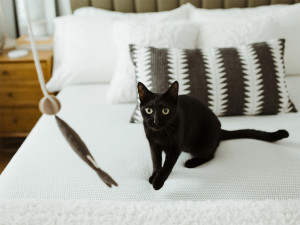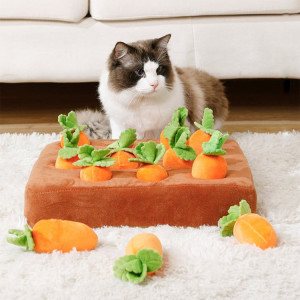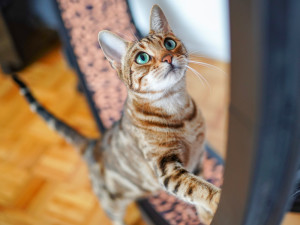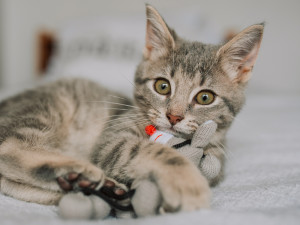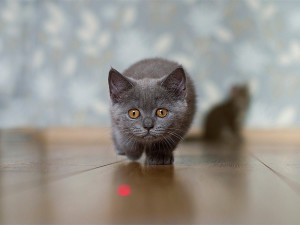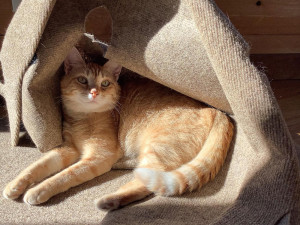Not All Cat Toys Are Created Equal
Here are the toys that will motivate your pet to get in the game.
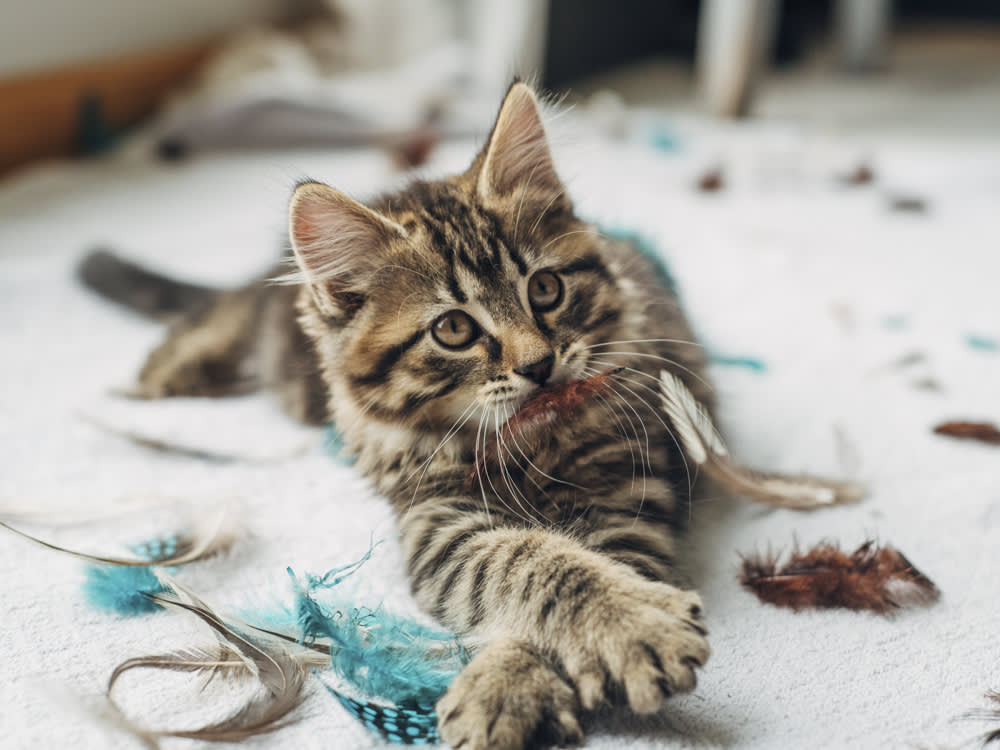
share article
Ever wondered why your cat seems offended by a felt mouse opens in a new taboffering, but will ambush a feathered lure like a tiger shark? The best of us have questionable tastes (pineapple on pizza!) but if you’re bewildered by your cat’s toy preferences, you’re not alone. While we’ve already had experts establish that cats are picky — picky about their foodopens in a new tab, their litteropens in a new tab, their litter boxesopens in a new tab — The Wildest asked Mikel Delgado, PhD, a certified cat behaviorist, to point us in the right direction at the pet store.
Anyone who has had a cat understands the delicate balance that cats are able to strike between sleeping in adorable positions for three quarters of the day and pouncing on your head when they’ve declared nap time over. Far from their ancestors who didn’t enjoy the luxury of being served dinner in an elevated, ergonomic bowlopens in a new tab, modern house cats don’t need to access their hunting instincts as often. But that’s not to say they don’t want to. Per Delgado, “All cats have the instinct to hunt, and play behavioropens in a new tab is an expression of their hunting instincts, just directed towards toys instead of prey.”
In general, our pets prefer stimulating cat toys: small objects that resemble prey and are easy to bat around. “If you think about play as an extension of hunting behavior, then it makes sense that cats would prefer toys that resemble prey animals in different ways,” Delgado says. “That might mean toys that move easily when touched, toys that have fur or other interesting textures, [toys that] have tails or that appear to look like a bird or a mouse.”
Most cats respond more to interactive toysopens in a new tab or to toys attached to a wand that we can manipulate to move in ways prey naturally do in the wild. On the other hand, toys that play dead, like felt mice, don’t stimulate cats’ stalking instincts. “Felt mice are inanimate, and while kittens and very playful cats might be interested in them, they are essentially dead and other cats will lose interest quickly.”
Nearly all cats, though, are interested in noises both inside and outside the home. “Certain sounds, such as rustling noises, and movement are attractive to cats and often instigate stalking behavior,” Delgado adds. “But some robotic toysopens in a new tab can be a little awkward or loud and scary to cats.”
Age, health, activity level, and personal preference also factor in. “Cats can have personal preferences about what types of toys they like to play with,” Delgado says. For example, if your cat is a bit older, less energetic, and possibly arthritic, then they won’t likely be tempted by a feathered wand.
And then there are cats who prefer “to play with household objects like paper balls and toilet paper rolls, even if those things aren’t really cat toys.” If your cat can’t be converted into a #floppyfishopens in a new tab fan, at least you can cut back on your cat toy budget by upcycling your TP. Or, you could always cheat and sprinkle come catnipopens in a new tab on (or stuff inside) any toys that you’re not ready to give up on yet.

Avery Felman
Avery is a writer and producer. She has written for numerous publications, including Refinery29, BuzzFeed, and V Magazine. When she’s not at her computer, you can find her reading, practicing her Greek on Duolingo, and delving into the Sex and the City discourse. She lives in Brooklyn, New York with her husband and their cat, Chicken, who rules with an iron fist.
Related articles
![Bengal cat running on indoor wheel]() opens in a new tab
opens in a new tab11 High-Tech Toys Your Cat Will Go Wild For
Stoke your little lion’s hunting instinct with these electronic cat toys.
![Black cat staring at a cat toy]() opens in a new tab
opens in a new tabHow to Play With Your Cat
Cat behaviorist Cristin Tamburo’s got a game plan.
![Small gray tabby kitten playing with a toy]() opens in a new tab
opens in a new tabThe Best Catnip Toys and Treats That’ll Have Your Cat Riding High
Let the purring, drooling, and chasing invisible butterflies commence.
![A kitten sneaking up on a laser pointer with big, interested eyes.]() opens in a new tab
opens in a new tabGet to the Point: Can Cats Play With Laser-Pointer Toys?
People have opinions about this cat toy. Here’s what you need to know.
![Tan cat laying in the sunlight on a beige colored Ripple Rug]() opens in a new tab
opens in a new tabThis Ripple Rug Is the Perfect Activity For Your Easily Bored Kitty
The best toy to keep your cat focused, entertained, and deterred from scratching the furniture.
![Three cat puzzles on a colorful pink, burgundy, and green color-block background]() opens in a new tab
opens in a new tabThe Best Puzzles to Unleash Your Cat’s Inner Einstein
Genius takes many forms. Could your cat be one?
